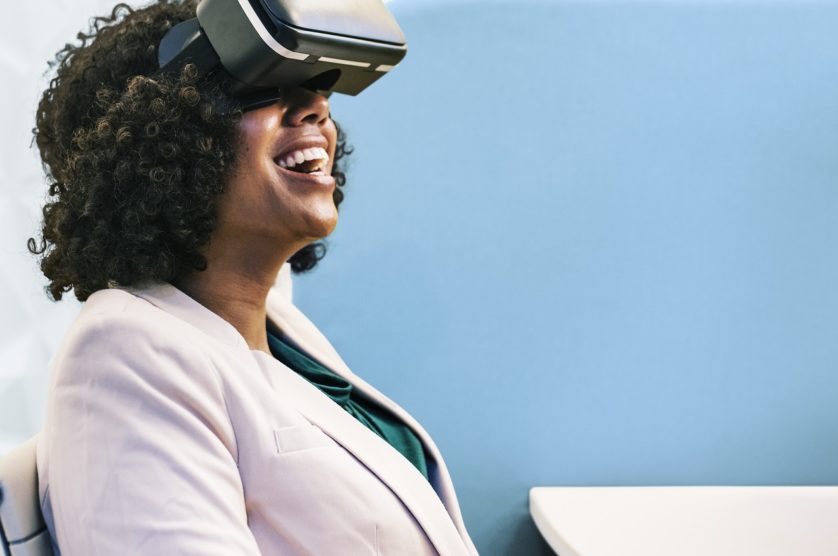
By admin
Today’s Fact:
Goldman Sachs pegs the total addressable market for VR/AR software revenues to be $2.6 billion by 2025.
Imagine walking into the home of your dreams: the high arching ceilings, crystals hanging from the ornate chandelier lighting the room, and double curved stairs over the backdrop of a 19th century stained glass window.
So what’s off about this picture? You’re sitting comfortably on the couch of your trusted realtor, surveying locations to decide which to visit in person. That’s the experience of many modern property buyers thanks to virtual reality technology.
How is VR being used in real estate?
Blueprints
Instead of creating 2D blueprints, which make properties hard to visualize, 3D VR models allow buyers and developers to see the true potential of properties in their earliest phases. People can walk through fully furnished virtualizations of buildings before they are even built, which allows design and construction kinks to be worked out before they reach the real world, where even simple mistakes are major setbacks to project budgets and timelines. This leads to unprecedented success of design decisions and marketing strategies.
Tours
Traditionally, real estate agents give their clients a list of homes that meet a set of criteria and, after much deliberation, visit a few locations. The industry is moving on, and it’s time to keep up; the future is in virtual reality. Scanning a home for virtual reality typically takes a professional with a full set of equipment approximately an hour to complete. Brokerages are beginning to bear the costs of virtual reality tours, which allow clients to have guided tours of properties supported via the Google Cardboard, Oculus Rift and Samsung Gear VR.
Seeing a property is far different than discussion, as it allows buyers to fully immerse themselves in the prospective property without actually being there. Virtual reality may seem an unnecessary expense to brokerages but, in the long term, companies are saving on the cost of advertising material and property staging.
What are the drawbacks?
While a benefit of virtual reality is showing multiple listings in a short amount of time, turning what used to take days into just minutes of work, some people report feeling dizzy and nauseous after VR tours. Even though VR saves buyers and brokers a lot of time, it costs a lot of money; scanning a home for virtual reality can cost up to $700.
Also, many home buyers pick spaces based on factors that are lost on virtual reality, such as the feeling of the building or neighborhood. While emotional engagement increases with VR in comparison to showing 2D photos of homes, when using virtual reality in place of a physical tour, the vibe of a space is harder to sense.
Sources:
“Virtual Reality in Real Estate.” Think Mobiles, thinkmobiles.com/blog/virtual-reality-real-estate/
Accessed 24 July 2018.
“Inreal Interactive Real Estate.” Inreal, en.inreal-tech.com/about-us/.
Accessed 24 July 2018.
“How virtual reality will transform real estate.” realestateagent.bmoharris.com, 18 Jan. 2017,
realestateagent.bmoharris.com/articles/virtual-reality-in-real-estate/#.W1ZGZy2ZO_s.
Paschich, Millen. “$33 Billion Virtual Reality Market Seen in Real Estate.”
gridium.com, 13 Apr. 2016, gridium.com/virtual-reality-in-real-estate/.
Leave a Reply